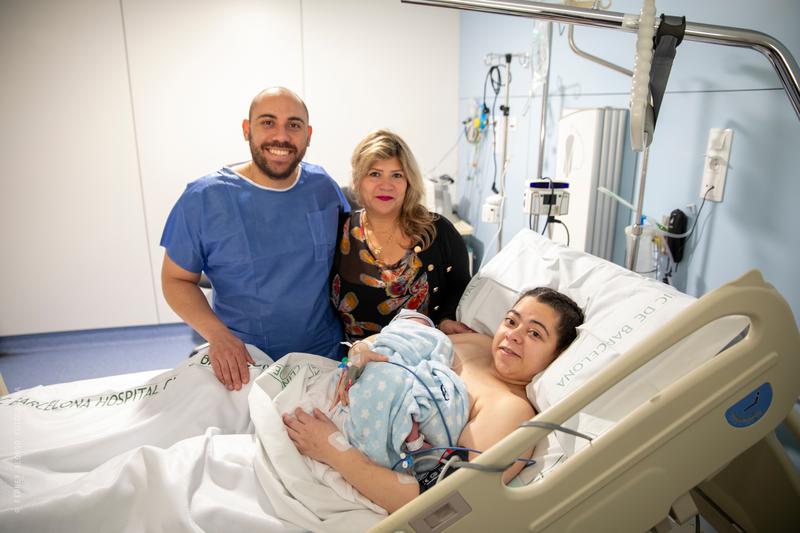Second woman with uterus transplant gives birth at Barcelona hospital
Birth made possible by grandmother's donation, second time at Hospital Clínic

The Barcelona Hospital Clínic has once again delivered a baby born after a uterus transplant. Manuel is the name of the newborn, who weighed 2.9 kilos at birth and was born on January 2, 2024, and both Manuel and his mother, Maira Montes, are doing well.
The birth was made possible after a womb donation from the baby’s grandmother, and Maira Montes's mother, which took place on April 4, 2022.
This is the second time a baby has been born at the hospital after a living organ donation. The first one at the hospital, and in Spain, took place in March of 2023. The Hospital Clínic is the only hospital in Spain that specializes in this type of surgery.
Maira was born without a uterus or fallopian tubes, the result of a congenital reproductive condition known as Mayer-Rokitansky-Küster-Hauser (MRKH) syndrome.
The research project that made Manuel’s birth possible began seven years ago and involves a team of more than 50 medical professionals. The project aims to validate the feasibility of this surgery, and five transplants in women with MRKH have been approved.
“Maria was inside the same uterus that is inside of her,” said Francisco Carmona, head of the gynecology service at Hospital Clínic, adding that it is a new “medical and scientific milestone” and an “absolute paradigm shift in the medical field.”
A highly complex surgery
The second transplant involved several technological changes from the first uterus transplant. In 2022, the hospital began using an exoscope, a device that has a high-magnification lens that produces high-resolution images. The exoscope was used in bench surgery, first to remove the uterus from the donor and prepare it for the transfer, and then for implantation in open surgery.
“This surgery is one of the most complex, and we have shown not only once but twice, that we can do it with positive results,” said Antonio Alcaraz head of urology at the hospital
Anatomically, the uterus is a highly complex organ. It has a network of small and fragile veins instead of visible, well-established veins as is the case in other organs. The vascularization of the organ increases twenty-fold when a person is pregnant, but is poorly vascularized when they are not.
Manuel, the second baby born through a womb transplant
Two months after the initial transplant, Maira Montes had her first period, and a few months later she began fertility treatment.
Maira had a completely normal pregnancy, and at 37 weeks the baby was born by c-section, as patients who receive a uterus transplant are unable to give birth vaginally because of the risk to the mother and the baby.
In Maira’s case, doctor Francesc Figueras head of the Maternal and Fetal Medicine Service, and his team performed the c-section.
Just four days after the birth, Maira, her partner Toño, and the baby were discharged, and Maira has already said that she would like to have another baby.
The first baby in the world born after a uterus transplant took place in 2014 at the Sahlgrenska University Hospital of the University of Gothenburg with the team being led by Mats Brännström.